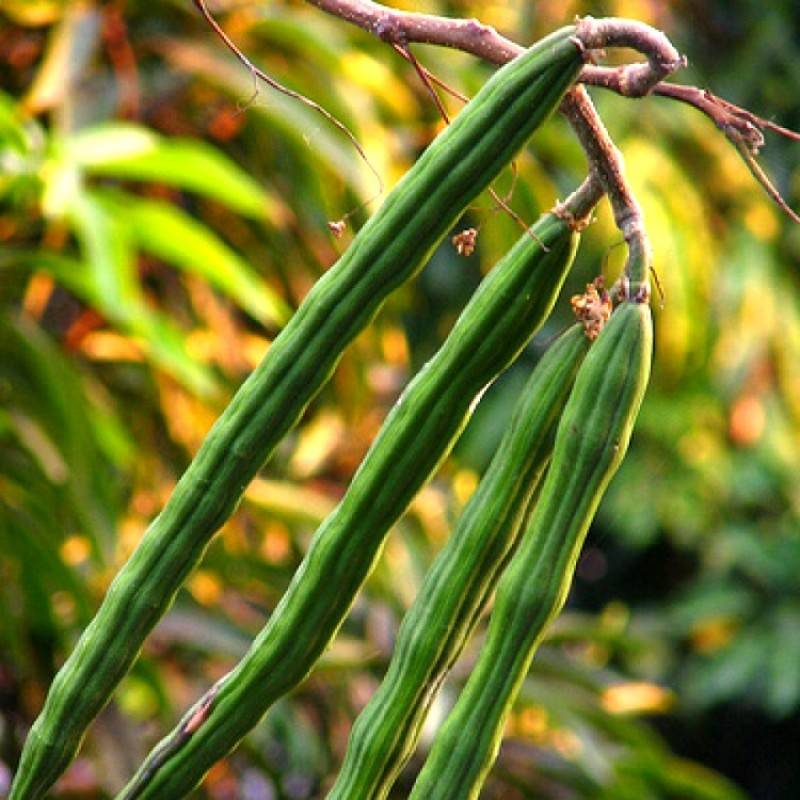
The wonderful dishes of India are well-known. Many greens are grown on this land, all of which have numerous health benefits and a delicious taste. One of them is the drumstick.
Drumstick, also known as Moringa, is a tall, slender, fast-growing tree planted primarily for its leaves, seedpods, and pericarp. Leaves are utilized as a vegetable, and pods are used in a variety of delectable cuisines. Moringa has several nutritional benefits in addition to its taste; it is high in iron, calcium, and vitamins A and C.
Varieties of Drumstick
Moringa can be divided into distinct types based on Ayurveda and public-sector-developed variations.
Moringa has three types according to Ayurveda: Shyama (black variation), Shveta (red variant), and Rakta (white variety) (Red variety).
Moringa has the varieties KM1, PKM1, PKM2, GKVK1, GKVK2, GKVK3, Dhanraj, Bhagya (KDM1), Konkan Ruchira, Anupama, and Rohit 1 created by the public sector.
Sowing and Land preparation
-
Soil preparation and sowing- The soil combination should be light and somewhat acidic, with one part sand to three parts soil (6.2 to 7.0 pH). Moringa is a plant that grows best in the summer. As a result, its seeds are planted in late winter. After seeds are placed in 30 cm deep and 30 cm broad holes, the remaining space in the holes can be filled with loose soil and manure.
-
After 5-10 days after seeding, the seeds will begin to germinate. Weeds should not be allowed to grow between the plants. Drumstick plants do not require much irrigation in general but water them frequently throughout the summer and in dry conditions.
Pests and Treatment
Most pests avoid drumstick plants, although some pests, such as the hairy caterpillar, moringa worm, pod fly, leaf caterpillar, and bark caterpillar, can attack them. The following techniques can be used to protect moringa from these pests:
-
During the summer, plow the alternate host plants and destroy them.
-
Avoid overlapping plants in the surrounding area.
-
Spread 7-8 kg of compost in each hole to give moringa the nutrients it needs.
-
Plan to cultivate legumes and ginger intercrops in place of previous crop leftovers.
-
Use light soil that drains well.
-
To prevent it from pod fly, spray 5% NSKE (Neem seed kernel extract) at 50% plant growth and after 35 days.
-
To burn weeds, solarize the soil using a clear plastic sheet.
Drumsticks also need to be protected from livestock like cattle, goats, sheep will eat its pods and leaves. Installation of proper fencing around plants will protect the plants.
Harvesting of Drumstick
Harvesting of drumstick pods should be done when pods are immature (1 cm diameter). Mature pods are also edible but they develop tough outer structures.
Leaves of drumstick can be harvested when plant grows 150 -200 cm tall, which take 3-4 months in fertile soil.
Here is the list of some trading portals to export your drumsticks.
http://www.exportgenius.in/export-data/india/drumstick.php
https://www.exportersindia.com/indian-suppliers/drumstick-vegetables.htm
https://www.commodityonline.com/market-place/vegetables/drumstick-leads/363










